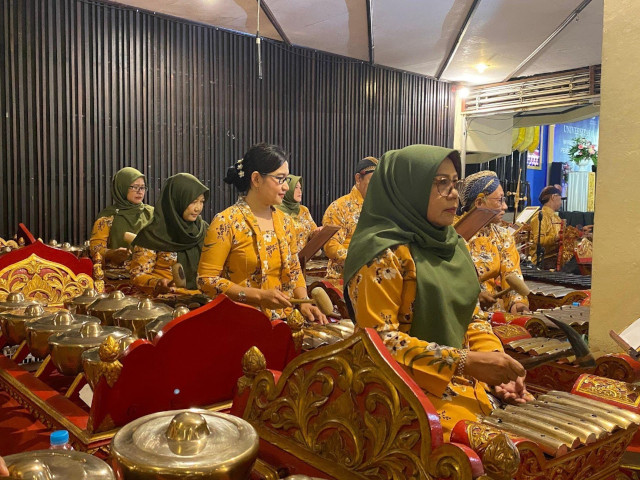Yogyakarta, October 23, 2024 – The atmosphere of the first wave postgraduate graduation at Gadjah Mada University (UGM) was made lively by a performance from the “Pustaka Laras” gamelan group from the UGM Library and Archives. With a repertoire of traditional songs, including Gati Padasih, Sasanti Gadjah Mada, Sri Slamet, Asmaradana, Gonjing Miring, Ondhe-Ondhe Semarang, and Gugur Gunung. The performance captivated graduates and invited guests alike.

The performance of “Pustaka Laras” was not merely entertainment but also underscored a commitment to cultural preservation. In line with Sustainable Development Goals (SDGs) number 11, which focuses on sustainable cities and communities, this performance highlighted the importance of safeguarding cultural heritage. The showcased gamelan art serves as a means to preserve and celebrate local culture, strengthen identity, and raise awareness of the importance of cultural preservation amidst modernity.
With every gamelan melody and song, hopes for future generations were etched in the air. This cultural performance is a tangible expression of continuous education, aligned with SDG number 4 regarding Quality Education. "Pustaka Laras" strives to uphold traditions while providing opportunities for the community to learn and appreciate the beauty of long-established cultural arts.
Graduates felt the depth of meaning in this performance. Graduation is not only about academic achievements but also a reminder of the importance of preserving cultural identity in the face of progress. With the support of gamelan art, the event became even more memorable, providing a distinctive atmosphere rich in local wisdom values.
This event demonstrates that art and culture can serve as bridges to achieve greater goals. Through the performance of “Pustaka Laras”, UGM showed its commitment not only to education but also to the preservation of culture that must be continually upheld and fought for. This graduation symbolizes a journey focused on knowledge, as well as love and respect for cultural heritage.
Contributor: Wasilatul Baroroh

